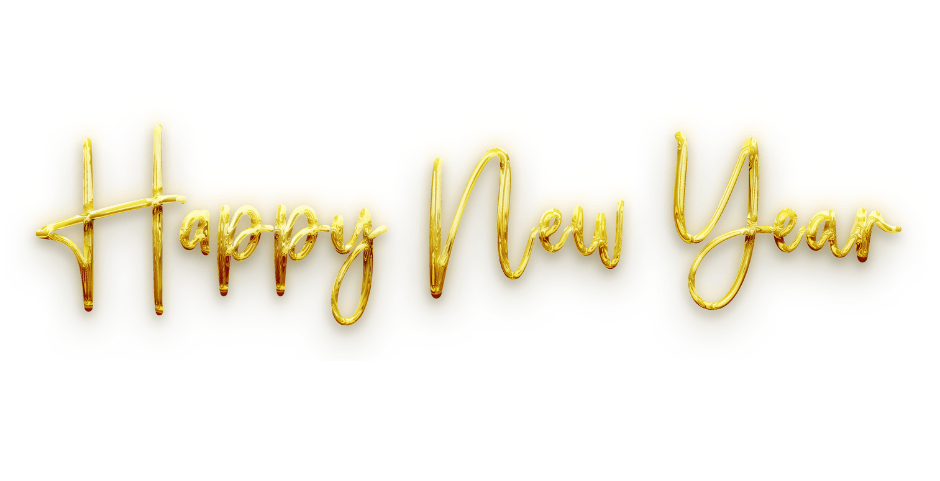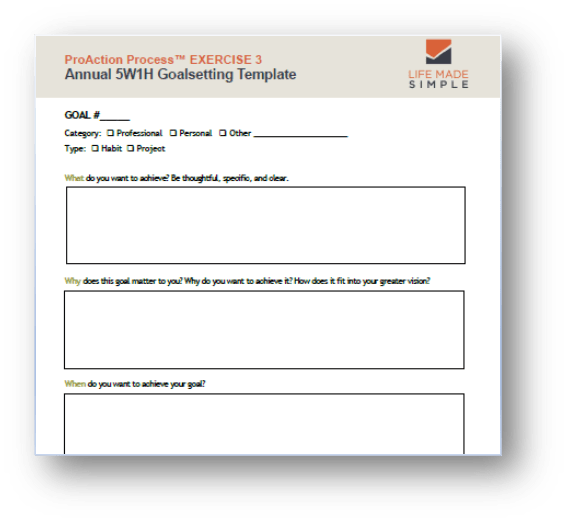
by Lori Vande Krol | Nov 6, 2025 | General Productivity, Goals and Priorities, Habits, Technology, Time Management, Tools
If you’ve seen the film The Social Dilemma on Netflix, you know how deliberately social media is engineered to keep us hooked. (If you haven’t, I recommend watching it!) Every like, notification, and reel is designed to capture and keep your attention—often without you even realizing it.
The good news? You can reclaim your time and attention, but it may take more than willpower alone to break the addictive hold our phones have on us. Here I share seven apps and tools to help you spend less time on your phone, allowing more time for what matters most.
Start with the Built-In Tools You Already Have
1. Digital Wellbeing (Android) / Screen Time (iOS)
What it does: Track and limit your screen time.
How it works: You can find these built-in tools in your settings. Both show exactly how much time you’re spending on every app. You can set daily limits for apps like Facebook or TikTok, and schedule times of day when apps are blocked.
Who it’s great for: Anyone who wants to monitor behavior, set boundaries, and make intentional adjustments without downloading anything extra.
Links: Digital Wellbeing / Screen Time
Add Downloadable Apps for Extra Support
2. Forest
What it does: Stay focused by growing virtual trees.
How it works: Every time you want to focus, you plant a tree. Leave the app to check Instagram or TikTok, and the tree dies. Over time, you’ll grow an entire forest representing your focused hours.
Who it’s great for: Visual learners and anyone motivated by gamification.
Link: Forest
3. Freedom
What it does: Block distracting apps and websites.
How it works: Schedule focus sessions across all your devices to block apps, websites, or even the entire internet if you want deep work time.
Who it’s great for: People who need cross-device control and serious focus sessions.
Link: Freedom
4. One Sec
What it does: Interrupt impulsive app openings.
How it works: Adds a short pause before opening apps —just long enough to ask yourself, “Do I really want to do this?”
Who it’s great for: Increasing intentionality by breaking the habit loop of compulsive checking.
Link: one sec
5. StayFree
What it does: Detailed app usage tracking and blocking across devices.
How it works: Offers insights into your usage patterns and allows you to set daily limits, block full apps, or certain features within apps. You can set reminders for when you’re approaching your limit. It can also give you a gentle pause or notification before you begin scrolling without thinking.
Who it’s great for: Users who want more granular control and analytics across devices.
Link: StayFree
6. Flipd
What it does: Tracks your productivity, boosts your motivation, and connects you with communities.
How it works: “Flip off” distracting apps for a set period, or schedule recurring focus sessions. You can also track your time and celebrate milestones. Connect with communities related to wellness, school, and more.
Who it’s great for: Students, professionals, or anyone who needs extra accountability.
Link: Flipd
7. Unpluq
What it does: Cultivates mindful phone use.
How it works: Uses a tag, or “key,” to unlock apps that you have chosen to block.
Who it’s great for: Those who want that extra control and intention of having to step away from their phone before unlocking apps. Also great to limit kids’ phone time.
Link: Unpluq
Practical Tips for Limiting Social Media
In addition to using supportive tools, here are some daily habits that can help reduce the pull your phone has on you:
- Schedule your scroll time: Instead of opening your phone whenever, block out specific times to check in on texts and messages.
- Set daily app limits: Decide ahead of time how much phone time is reasonable per day. Step away when you hit that limit.
- Batch notifications: Turn off non-essential alerts so you’re not constantly pulled to your phone and potentially back into feeds.
- Phone-free zones: Keep your bedroom, dinner table, or work area free from phones and apps. Out of sight = out of mind.
- Go analog: Use analog alternatives when possible (planners, journals, books, clocks).
Reducing screen time isn’t about restriction—it’s about reclaiming your attention and living intentionally. Start with the tools already on your phone, then layer in apps that support focus, mindfulness, and accountability. With the right combination, you can take back control and make technology work for you.

by Lori Vande Krol | Sep 11, 2025 | General Productivity, Goals and Priorities, Habits, Planning, Time Management, Tools
Do you ever feel like you’re spinning your wheels—busy all day but never quite moving forward? Many of my clients come to me for exactly that reason: they’re craving structure in their personal and work lives that feels supportive but not stifling, and they don’t know where to start. The key is to create a schedule built from habits and routines that support your priorities. It sounds simple, but creating your ideal schedule takes more intention than you might think.
First, Get Clear on Your Priorities
Whenever I begin work with a client, we spend time defining or reviewing their Mission, Vision, and Goals – the first 3 steps in the ProAction Process™. Without this, it is difficult to know which habits and routines will move you towards happiness and success. Once the priorities are clear, and we have a basis for what’s most important, we can then dive into the fun stuff – creating the structured schedule. And, the first action towards determining an ideal, supportive schedule is to define habits and routines.
Define Your Habits
Think of habits as the puzzle pieces towards reaching your goals and creating your vision. Once you are clear on your priorities, these puzzle pieces will fall into place. You can then more easily define which habits you want to cultivate—and how often you want them to show up—then you can stack them into daily routines and weekly rhythms that feel natural. Before you know it, your vision will start to form. Without that clarity, plans and schedules can end up overcomplicated, overwhelming, or unsustainable.
The Habits Frequency Framework
To help my clients get clear on their habits, I use a simple framework. It breaks habits down into four categories based on frequency:
- Daily – the habits you want to anchor your day with (e.g., journaling, exercise, reading)
- Weekly – the habits that keep work and life on track but don’t need daily attention (e.g., team check-ins, sales calls, meal planning, phone call to Mom)
- Monthly – the habits that add intentionality and prevent things from piling up (e.g., filing/scanning, reviewing goals, networking events, date night)
- Annually – the habits that create traditions, resets, and big-picture reflection (e.g., yearly retreat, tax prep, mission and vision refresh, holiday party)
This frequency-based approach makes habits feel less like a mountain to climb and more like the puzzle pieces you can place where they fit best.
I recently worked with a client, Lilly, who was overwhelmed with work and life. She was working nights and weekends just to keep up, barely seeing her family, and she never felt like she could get ahead and look forward. After clarifying Lilly’s priorities, we determined that she was trying to do too many things. She pared back her focus and built habits and routines to support her current, highest priority goals. By defining a habit to review and reset her goals (quarterly and annually), Lilly became more comfortable letting other projects and tasks wait.
Her shorter-term habits (daily, weekly, monthly) were then focused on actions that supported her more immediate goals and priorities…like attending 2 events per month that targeted a specific client-base, blocking time each week to finish her e-book, setting aside time on Sundays to meal plan, scheduling a family outing once per month, and getting to bed earlier every day.
Click below to grab the simple, fillable template I use with clients to map habits by frequency—it’s the perfect first step to designing your own ideal schedule.
Habit Building Template
FREE DOWNLOAD
Build Your Routines and Schedule Them
Once your habit list feels right, it’s time to build routines and schedule them. Daily habits shape your beginning of day and end of day flows. Weekly ones find their home on specific days. Monthly habits might get anchored to a certain date each month. Annual habits can be tied to seasons, months, or meaningful dates.
Once Lilly blocked time for her defined habits and routines, she could more clearly see what her ideal week looked like. She could structure her schedule in a way that allowed her to focus on her current priorities and meet her goal of no-work evenings and weekends. As she developed these habits and worked more intentionally, she felt more accomplished each week – even though she was working less hours.
When your habits are placed with intention and support your mission, vision, and goals, your routines will feel less like rigid rules and more like a supportive rhythm that carries you forward.
Final Thought
Remember: structure doesn’t create habits—habits create structure. Get clear on your priorities, and let your habits build the structure that supports your most productive (and enjoyable) life. So, grab the template and begin mapping out your habits today—your future self will thank you.

by Lori Vande Krol | Jan 9, 2025 | General Productivity, Goals and Priorities, Motivation, Planning, Team Productivity, Time Management
“What if a goal is unachievable?” This question came from an audience member during a recent goal-setting workshop I presented. I suspect she was referring to a goal assigned by her “higher-ups” at work – a goal she felt was unreasonable. Many of us, at some point, have likely felt similarly about personal or professional goals. My immediate response was, “But what if it is possible? What could happen if you actually reached that goal?” Before dismissing a goal as unattainable, it’s worth taking a step back and evaluating why it feels out of reach.
1. Know why the goal is important to achieve.
Without a good understanding of why a goal is important, it’s hard to drive passion and motivation towards achieving it. Ask yourself, “What is the ultimate purpose of this goal?” Understanding the “why” can help you stay focused and committed, even when the journey gets tough. This clarity often reveals where the goal aligns with larger organizational or personal values, making it easier to prioritize and tackle.
2. Review current and needed resources to achieve the goal.
Are there resource limitations that may hinder progress toward the goal? This evaluation should include people, time, money, tools, and technology. If the goal is truly unachievable using current resources, a case should be made for including needed resources in the plan for that goal. For example, if you lack the necessary expertise, consider seeking training or outsourcing. Similarly, if time constraints are an issue, reevaluate deadlines to ensure they are realistic and manageable. You might also look for ways to automate steps or work to create other efficiencies.
3. Get everyone in the boat and rowing the same direction.
Even if all of the people impacted by a goal know and understand the “why,” you may still have team members who disagree with the goal. A rowboat reaches the finish line only if all team members are rowing together in the same direction. Think how far and fast you can go if everyone is in sync and working together. To achieve this unity, foster open communication, address concerns, and ensure everyone feels heard and valued. When team members share a sense of ownership over the goal, they are more likely to contribute wholeheartedly.
4. Break the goal into smaller milestones.
Sometimes a goal feels unachievable because it seems overwhelming. Breaking it into smaller, actionable strategies and steps can make it more manageable. Each milestone achieved provides a sense of accomplishment and builds momentum toward the larger goal.
5. Evaluate potential obstacles and solutions.
Identify the barriers that make the goal seem out of reach. Are they external, like market conditions or budget constraints, or internal, like skill gaps or low morale? Once identified, brainstorm potential solutions or workarounds. This proactive approach transforms challenges into opportunities for innovation.
6. Be open to revisiting and redefining the goal.
While it’s essential to push boundaries, some goals might need to be adjusted to reflect reality. If, after thorough evaluation, a goal remains unattainable, consider redefining it. Adjusting the scope doesn’t mean failure; it’s about being strategic and focusing on what can realistically be accomplished while still striving for excellence.
Final Thoughts
Unachievable goals can feel daunting, but they also present opportunities for growth and innovation. By understanding the “why,” assessing resources, fostering team alignment, and adopting a strategic approach, you can turn seemingly impossible goals into achievable ones. Remember, the journey toward a goal often teaches us more than the destination itself. Even if you don’t fully achieve the goal, the progress made can set the stage for future success.
For a list of goalsetting resources, check out our prior blog: Goal Setting is Hard.

by Lori Vande Krol | Dec 27, 2024 | General Productivity, Goals and Priorities, Habits, Planning, Time Management
As 2024 comes to a close, it’s the perfect time to pause and reflect on the year. Looking back allows us to appreciate our achievements, learn from challenges, and set the stage for an even better year ahead. Here are a few questions to guide your reflection and help you prepare for a successful 2025:
- What did I accomplish this year? What am I most proud of? What victories, big or small, are worth celebrating?
- What actions contributed to my success this year? Which habits or strategies will I continue to build on?
- What were my biggest challenges? Were they avoidable? What can I do to prevent similar obstacles in the future?
- What will I do differently next year? What new actions or changes will I take to move forward?
- What is one specific area I can improve in 2025?
Now, grab your favorite notebook or journal, cozy up with a warm drink, and carve out some quiet time for self-reflection. This time is a gift — a chance to acknowledge your growth and set meaningful intentions for the year ahead.
Click here for a worksheet to support your Year in Review!

by Lori Vande Krol | Jan 11, 2024 | General Productivity, Goals and Priorities, Habits, Time Management
Have you set your 2024 goals? If so, you are ahead of many. In fact, you are in the top 14% of business professionals! Are they written down? Even better! Do you have specific strategies and milestones for achieving them? You are on your way to success!
But if you are like most, you are struggling to create clear annual goals with specific objectives and strategies. You may be procrastinating this process due to a lack of clarity, or you just don’t know where to start. Unfortunately, this often leads to another year where you are reacting to the latest “fire” or doing whatever is in front of you instead of prioritizing and making progress toward goals and priorities that will allow you to reach your vision and dreams. Why not take a different approach to annual goalsetting this year?
5 Annual Goalsetting Questions
Creating intentional, well-thought-out annual goals does not have to be difficult. You just need some focused time to answer the following questions (note these questions work for an individual, team, or business):
1. What do you want to achieve? Be thoughtful, specific, and clear.
2. Why does this goal matter to you? Why do you want to achieve it? How does it fit into your greater vision?
Honestly answering Question #2 may cause you to determine a goal is not important, does not support your greater mission or vision, or is not a priority right now. It is ok to put that goal aside to review in a future year, or remove it for good!
3. When do you want to achieve your goal?
Choose a target end date for your goal. Or, decide which quarter(s) of the coming year you will focus on the goal. Knowing your target date will help break the goal into intermediate milestones in Question #5 below.
4. Who will be involved? Do you have full control over the outcome of the goal? Do you need someone to provide support and accountability?
Use your answers from Questions 1-4 to write your goal in 1-2 sentences. Goals that are written are three times more likely to be achieved. Once you have a clearly written goal, it is time for Question #5.
5. How will you achieve your goal? What strategies or steps will you use? What are key milestones, including dates? List these strategies and target dates to ensure you are on track throughout the year.
5W1H Annual Goalsetting
These 5 questions form the basis of 5W1H Annual Goalsetting™: What, Why, When, Who, and How. (Wondering about the fifth “W”? The fifth “W” is to help you remember to “Write” it down!)
You may be familiar with SMART Goals: those that are specific, measurable, achievable, realistic, and time-bound. The 5W1H Goalsetting questions support the thought process needed to develop SMART Goals.
Use the button below to download a 5W1H Annual Goalsetting Template which includes space for answering each question and a table for recording your strategies and milestones. Choose one goal you want to achieve in 2024 to practice the process. Once you have that completed, choose another. Before you know it, you’ll be a pro!

Annual 5W1H Goalsetting Template
FREE DOWNLOAD
Annual Goal Review and Tracking
When defining goals, it is important to distinguish between goals that are project-based and goals that are habits to create or change. How you define and track these two types of goals is very different. It is important to have a tool and process in place to regularly review and update your project-based goals as well as habit tracking tools for your habit-based goals. I will cover the review and tracking process, and potential tools, in a future blog. Stay tuned!
Help!
If you are still struggling with setting annual goals for yourself, your team, or your business, please reach out. I am here to help you clarify and reach your work and life goals.
Contact Lori at Life Made Simple or schedule your free 30-minute consultation.

by Lori Vande Krol | Nov 20, 2023 | General Productivity, Goals and Priorities, Organization, Planning, Time Management, Tools
There is no question this is a busy time of year. But as we near the end of 2023, there are still a few things you can do to close out the year and prepare for a successful 2024.
1. Spend time on office “maintenance. Schedule a few days to catch up on filing, update your contact database, organize your receipts for the year (send them to Shoeboxed and let them take care of it for you!), empty your email inbox, and/or scan in those piles of paper (I recommend the Fujitsu ScanSnap iX1600 for PC or Mac for this task.) I like to use the last week of the year for these maintenance items. Spending some time to maintain your office productivity systems will help you feel you can start the New Year fresh and accomplish your goals.
2. Fill a bag for donation. Get a trash bag (or box depending on the type of items) and take 10-15 minutes to fill it with items to donate. Drop them off at a shelter, church, Goodwill, Salvation Army, or the charitable organization of your choice before the end of the year to receive your 2023 tax deduction. Help others that may not be as blessed during the holidays and clear out your space at the same time.
3. Crush what’s left of 2023. Plan the remainder of your year to help you prioritize and be intentional about how you want to spend this busy time. Brainstorm a list of personal and work tasks you want to accomplish before yearend. Be sure to review your 2023 goals to determine what is left to accomplish and determine if and how you will do so. Once you have a list of tasks, schedule them. With about 6 weeks remaining in the year, when will you focus on each task? Check out the ProAction Planner as a helpful tool for planning and scheduling.
4. Reflect on the year. Review the good and bad from 2023. What went well? Where did you find challenges? What will you continue doing, start doing, and/or stop doing in 2024? Download and complete our Year in Review Template, using the button below, to help you through the process.
5. Create your 2024 goals. Determine three to five goals for 2024. Why are these goals important? What strategies will you use to reach your goals? What tools or resources do you need to accomplish them? Check out our past blog, Goal Setting is Hard, for more goal-setting tips.
While each of these takes some time and focus, the value received is well worth it. Be sure to schedule them in before your end-of-year calendar is full.








Recent Comments